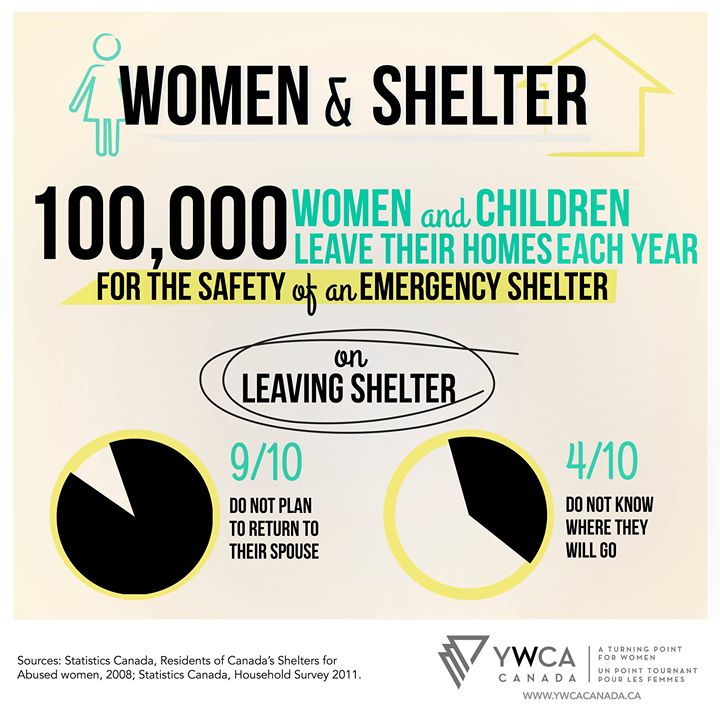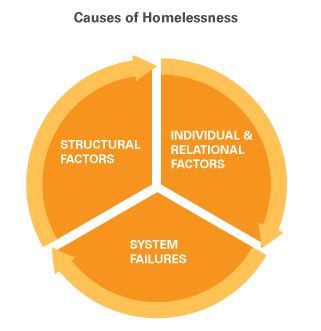The YWCA is “the oldest and largest women’s multi service organization”. The YWCA has continued to be vocal in their opposition to violence against women. This infographic is important for the community, researchers and service providers who work with people experiencing homelessness. Abuse continues to be a leading pathway to homelessness in Canada. Research found that as many as three quarters of women who use shelters have been the victims of abuse. A large majority, 2 out of 3 women, were fleeing current spouses or partners.
Emergency shelters are important resources for women leaving unsafe housing and unsafe relationships. The high numbers of individuals that still utilize the resources demonstrate the continued need for specific interventions. The needs of women and children are complex and differ from the needs of other people experiencing homelessness. Statistics Canada reported that the number of shelter beds has been increasing in the past 10 years with funding provided by municipalities and charities. Less funding is available by provincial governments.

While 100,000 women and children use shelters, this is estimated to only account for 10% of women who leave their homes due to abuse. The lack of affordable housing and other accommodations is one of the chief reasons that women and their children return to abusive relationships, exposing themselves to further violence. Almost half of the women admitted to emergency shelters were with their children. The women wanted to protect their children from witnessing the abuse they were experiencing, and protect them from psychologically or physically abusive situations. Despite these high numbers, only 25% had reported the abuse to police, and 16% had laid charges.
The YWCA published a report entitled ‘Life Beyond Shelters’, that highlights a number of important policy problems related to experiences of homelessness for women and their children. The YWCA recommended a variety of reforms that can help prevent homelessness.
 Some of these include:
Some of these include:
- Making information on safe and affordable housing easier to access, even for those who are not in shelters.
- Prioritizing intake in emergency shelters make sure that women and children who are in urgent need have access to beds.
- Amendments to eligibility criteria for subsidized housing
While this infographic is helpful, I also found additional explanations in the newly released report Coming of Age: Reimagining the Response to Youth Homelessness in Canada by Stephen Gaetz. Causes of homelessness are not only individual and relational, but also the result of structural factors and system failures. It is important to continue to provide interventions that allow people to safely escape abusive relationships without risking homelessness.
